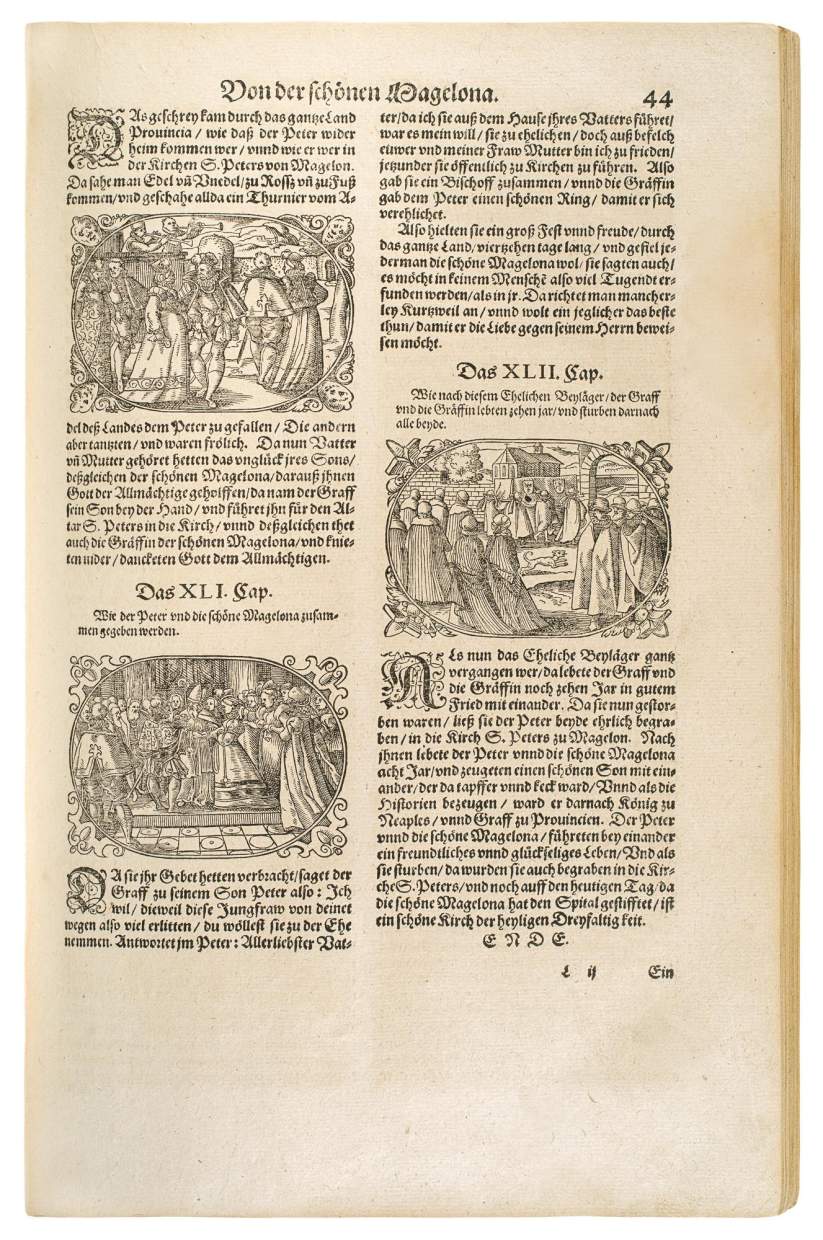

Das Buch der Liebe, Inhaltendt Herrliche Schöne historien Allerley Ältere und newen Exempel
Frankfurt am Main: (Johann Feyerabend for) Sigmund Feyerabend, 1587
First and only edition of this anthology


[Martin Schrot], Von der Erschrocklichen Zurstörung unnd Niderlag des gantzen Bapstumbs, gepropheceyet und geweissagt, durch die propheten, Christum, und seine Aposteln, und auß Johannis Apocalypsi figürlich unnd sichtlich gesehen.
[Augsburg: Hans Gegler for David de Necker, 1558.]
First edition.
Hide caption

Das Buch der Liebe, Inhaltendt Herrliche Schöne historien Allerley Ältere und newen Exempel
Frankfurt am Main: (Johann Feyerabend for) Sigmund Feyerabend, 1587
First and only edition of this anthology

This very rare collection includes thirteen popular prose romances in German: Kaiser Octavian, Magelone, Ritter Galmy, Tristrant und Isalde, Camillo und Emilia, Florio und Bianceffora, Theagenes und Chariclia, Gabriotto und Reinhart, Melusine, Ritter vom Turn, Pontus und Sidonia, Herzog Herpin, and Wigoleis. The texts derive from different literary traditions, such as French and Italian literature, late antiquity, German medieval epic poetry, and 16th-century chapbooks. All stories are set in the chivalric-courtly milieu and subsumed under the theme of love. Several authors and translators of the various stories are known, however, none are mentioned in this collection, as the publisher Sigmund Feyerabend chose to 'anonymise' his entertaining edition.
The book encompasses a larger introductory woodcut, and countless column-wide woodcuts. The first illustration for the tale of Kaiser Octavian (Emperor Octavian) shows a beautiful assemblage of pleasurable distractions for the nobility, such as hunting, tournaments, jesters, music, dance, drink, gourmandise, and courtly love. Due to their fine hatching and details, the woodcuts are reminiscent of engravings.
All images are placed on an elliptical surface framed by scrollwork or other Renaissance ornament. Different layouts help to distinguish the two major artistic styles to be found in the book. Style A constitutes the major part of the illustration material. It is characterised by generous compositions with spacious objects and voluminous figures that fill the image space to the point of bursting. Plentiful hatching is used but these compositions seem more buoyant and brighter than the others. Style B surrounds its scenes with a complete framework, preferring minute compositions with slim figures and forceful parallel hatchings that add a gloomy tone.
One of the cuts (on f. 308) bears the monogram IA and thus implying the Swiss artist Jost Amman who was indeed Feyerabend’s official artist after the death of Virgil Solis in 1562. Amman shows an amazing scope and flexibility in his woodcut illustration underlining the rare and refined nature of this unique edition of Buch der Liebe.



